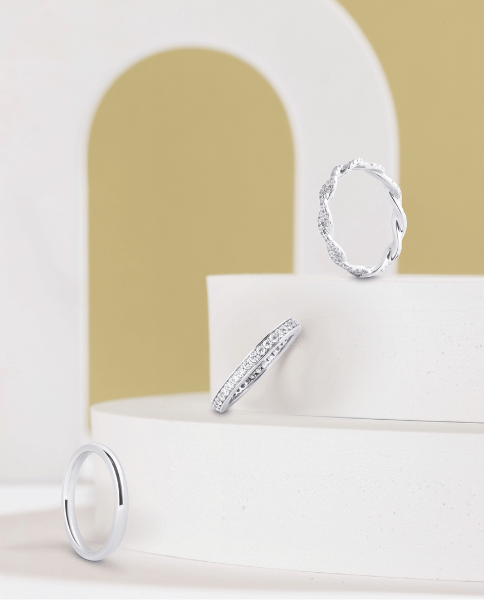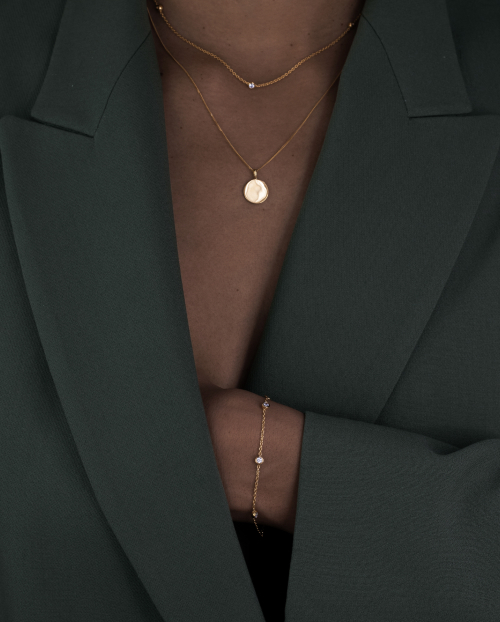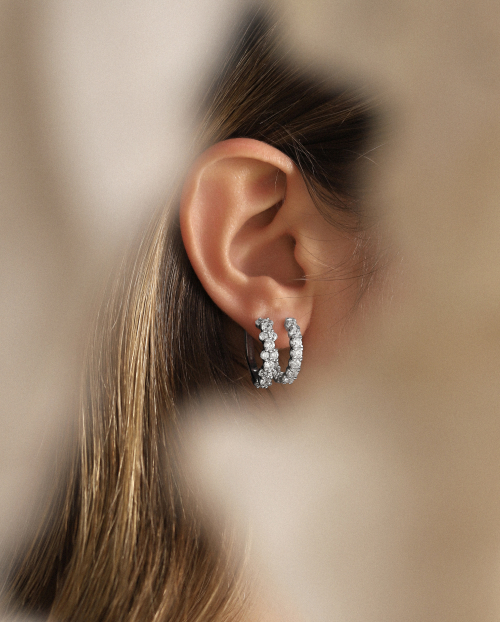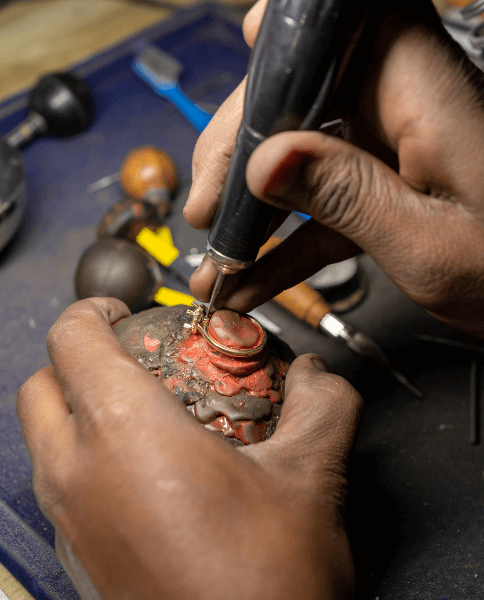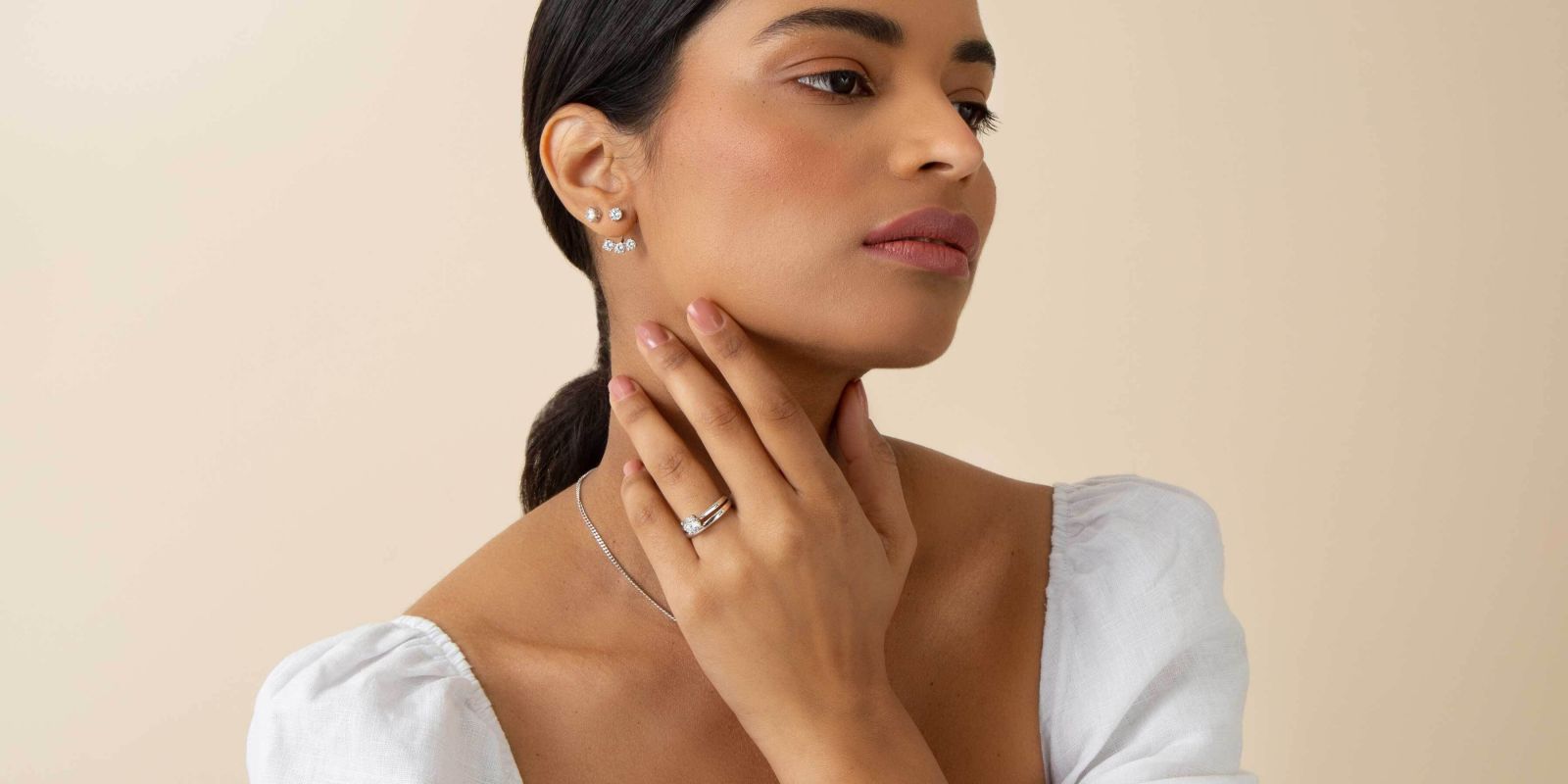The Interesting History of Engagement Rings
The beautiful engagement ring that we all know and desire today wasn’t always a symbol of love - it was actually a mark of ownership in ancient times. While it doesn't have the most romantic of beginnings, the history of the engagement ring is a fascinating one as it spans and evolves over hundreds of years.
In this guide, we’ll walk you through the history of the engagement ring through the ages and how more modern trends are being shaped in today’s society too.
Where Did Engagement Rings Originate?
Some of the earliest known origins of the engagement ring, unsurprisingly, featured no gemstones or even metal at all. It’s believed that most women in ancient times, particularly in Egypt, would twist plants into small circles, as the circle is a symbol of eternity, to wear around the fourth finger on the left hand, which was connected to the heart by the vena amoris.
The engagement ring would then signify that she and her family were no longer seeking a partner in marriage. Although, rather than it being a romantic union, it was more of a business contract that would connect wealthy families together or create bargains between families. The ring would be annually renewed until the marriage was formalised and, essentially, the contract was complete.
It wasn’t until Roman times where women started to wear rings made of ivory, flint, bone, copper and iron, which were much more sturdy. Iron was the most popular choice, especially amongst the rich, as it was a symbol of obedience, ownership and an unbreakable bond. However, later in the ruins of Pompeii, gold rings were found and it was discovered that Romans were fans of owning two engagement rings. The traditional iron ring would be worn at home and the gold ring worn in public.
Engagement Rings Through the Ages
Through the ages, the meaning and the styles of engagement rings have drastically transformed.
Middle Ages
During the Middle Ages, the importance of the engagement ring grew, and Pope Nicolas I, in 866 AD, formally declared that the engagement ring would become the official form of announcing intentions of marriage. The Pope has a very conservative view on the sanctity of marriage and wrote that when a couple becomes engaged, the man will give the woman a ‘ring of faith’. He also stated that gold would be the standard metal for rings of this type. Although, gold was not readily available in many European countries at this time.
In 1477, the Archduke Maximillian of Austria used diamonds on an engagement ring for the first time when he proposed to Mary of Burgundy. The ring was a simple yellow gold band that was then set with long and narrow diamonds in the shape of an ‘M’. Despite this grand gesture though, diamond engagement rings still didn’t fully take off until much later.
European Renaissance
At the height of the European Renaissance, beautiful and intricate decorative engagement rings started to grow popular. The gimmel ring was created to symbolise love as it was often designed with two or three hoops that, when worn together, makes one complete ring. These rings also had a clasped hand design to show the union of two people, similar to the Celtic Claddagh rings, which still remain popular in some countries and cultures to this day.
Poesy rings were also popular in England and France during the 15th-17th centuries. These rings were a simple gold band but had a short, meaningful inscription inside. When the ring was worn, the inscription was hidden. This then made the wearers feel as though they were keeping a secret which heightened the romance of the ring.
Victorian Era
In the Victorian era, engagement rings were still predominantly used by the upper classes. However, after the discovery of diamond mines in South Africa and the industrial revolution, jewellery production became a more efficient process, and engaged couples from all classes had better access to and could afford diamond engagement rings. Around 5 years after the diamonds had been found and identified, the mines in South Africa exceeded 1 million carats per year and modern cutting techniques were introduced in 1914 to enhance the diamond's sparkle.
Dowries were also a popular way of securing an engagement and so simple bands were often the most common way to then announce the pending marriage. Interestingly, engagement rings used to be worn on the right hand during this time and were transferred to the left hand during the ceremony.
20th Century
After WW1, the popularity of diamond engagement rings dramatically declined, and, with the following Great Depression era, they became less and less relevant. The prices of diamonds collapsed, and even the younger generation of adults were uninterested in the precious gem. Of course, this was incredibly damaging to leading jewellery companies at the time.
In 1939, De Beers, a diamond mining company, started an advertising campaign with the slogan ‘a diamond is forever’ which is still famous to this day. The campaign was so popular, especially amongst celebrities, that by the early 1940s, diamond engagement rings were once again at the top around the world and the market boomed.
Engagement Rings in Today’s Society
Over the years, as different cuts, sizes, clarity and coloured diamonds became available the trends have changed more often. From classic solitaires to 3-stone diamonds and outrageously large 30+ carat diamond rings, the options truly are endless. In recent years, we’ve also seen more brides opting for coloured stones and rings made out of unique materials. This primarily began with Princess Diana’s blue sapphire ring which was then given to Kate Middleton by Prince William. Blake Lively also received a light pink oval diamond in a rose gold setting by Ryan Reynolds and Katy Perry was given a striking ruby ring by Orlando Bloom.
The newer generation of engagement ring customers are now looking for distinct styles that are unique, meaningful, thoughtful and sustainable. Lab grown diamond engagement rings are growing to be an increasingly popular choice amongst couples as more are aware of the damaging environmental effects that diamond mining has as well as the poor working conditions and other ethical issues such as the production of blood diamonds.
Lab grown diamonds are made using the same high pressure and high-temperature conditions that form natural diamonds and are then treated using heat and irradiation to change the colours or enhance the look. So there is no structural or visual difference between lab grown and natural diamonds.
Looking to buy an engagement ring soon? Read our guide to choosing the perfect engagement ring to learn everything you need to know.
Also, if you’re unsure on whether you want to choose a natural diamond or a lab grown diamond take a look at our guide which explores the differences between each one.















